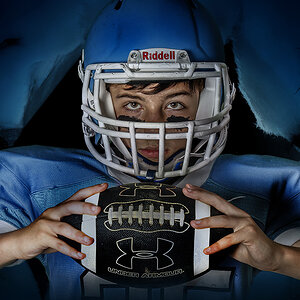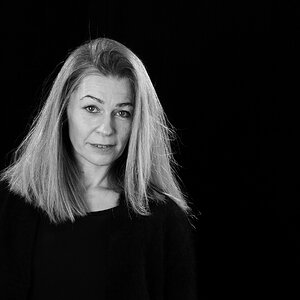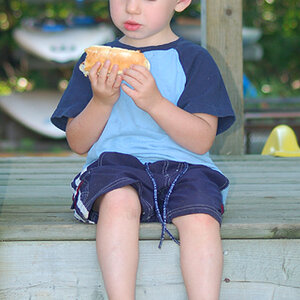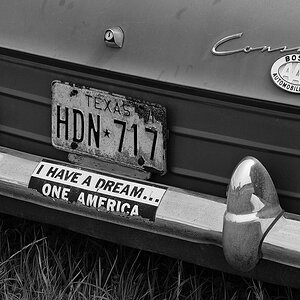PeterHun
TPF Noob!
- Joined
- Aug 19, 2019
- Messages
- 2
- Reaction score
- 0
- Can others edit my Photos
- Photos NOT OK to edit
Hello,
I have a problem here, and I really hope someone will be able to help, as it drives me crazy.
I am taking pictures of large posters for a website.
I built a vacuum table (holding the artworks nicely flat even in vertical position), I have 2 strong light sources 45 degrees from both sides, and i bought a color checker passport.
The camera is a Canon 550D with kit lens (EFs 18-55mm IS)
I set the white balance and the exposure with the grey card of the color checker:
-For white balance I take a photo with the grey card, and set the white balance manually.
-For exposure, I set the camera's light meter to zero while pointing it to the center of the grey card, with the light meter on SPOT mode.
Of course I do this with the same light environment what I use for the artworks.
After shooting, I use the color checker to color correct the photo.
Still the final result seems quite under exposed.
For testing reasons i made a scan of one of the posters (with a flatbed scanner) - the result looks great, and the colors are also seems to be right.
Comparing the photos i take and the scan, the photo is MUCH MORE dark.
I was trying to get as close as I can to the scanned version by adding exposure manually in photoshop (of course I am shooting in RAW).
The result is close - but still I feel the scan looks better.
But my main question: W
>>>>What is the reason that my photos areunder exposed?<<<<
When I add some exposure (+1.3), the result is somewhat satisfying, but I would like to have as accurate colors and exposure level as I can, without manually editing the photos - using only the judgement of my eyes.
Please give advice, what can cause the problem?
Thank you!
Ps.: a friend of mine just told me, maybe it is the exposure compensation in my camera - I am shooting in manual mode where is no exposure compensation, but just to make it sure i set it on ZERO and made a test shot - the result is the same, under exposed image.
Please see the test shots and the scan below:

I have a problem here, and I really hope someone will be able to help, as it drives me crazy.
I am taking pictures of large posters for a website.
I built a vacuum table (holding the artworks nicely flat even in vertical position), I have 2 strong light sources 45 degrees from both sides, and i bought a color checker passport.
The camera is a Canon 550D with kit lens (EFs 18-55mm IS)
I set the white balance and the exposure with the grey card of the color checker:
-For white balance I take a photo with the grey card, and set the white balance manually.
-For exposure, I set the camera's light meter to zero while pointing it to the center of the grey card, with the light meter on SPOT mode.
Of course I do this with the same light environment what I use for the artworks.
After shooting, I use the color checker to color correct the photo.
Still the final result seems quite under exposed.
For testing reasons i made a scan of one of the posters (with a flatbed scanner) - the result looks great, and the colors are also seems to be right.
Comparing the photos i take and the scan, the photo is MUCH MORE dark.
I was trying to get as close as I can to the scanned version by adding exposure manually in photoshop (of course I am shooting in RAW).
The result is close - but still I feel the scan looks better.
But my main question: W
>>>>What is the reason that my photos areunder exposed?<<<<
When I add some exposure (+1.3), the result is somewhat satisfying, but I would like to have as accurate colors and exposure level as I can, without manually editing the photos - using only the judgement of my eyes.
Please give advice, what can cause the problem?
Thank you!
Ps.: a friend of mine just told me, maybe it is the exposure compensation in my camera - I am shooting in manual mode where is no exposure compensation, but just to make it sure i set it on ZERO and made a test shot - the result is the same, under exposed image.
Please see the test shots and the scan below:



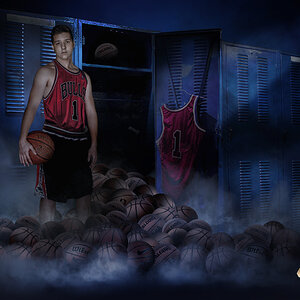
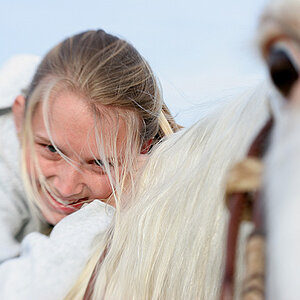
![[No title]](/data/xfmg/thumbnail/38/38741-89a8c6f9d841889783a4fae2b8c40902.jpg?1619738704)
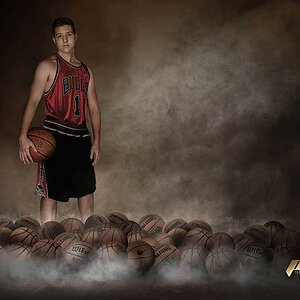
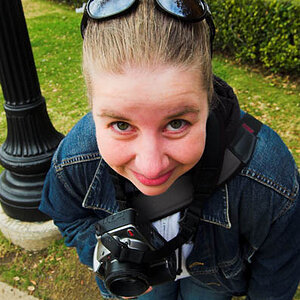
![[No title]](/data/xfmg/thumbnail/38/38744-40fa9998379b0f33925964a11a718029.jpg?1619738704)
